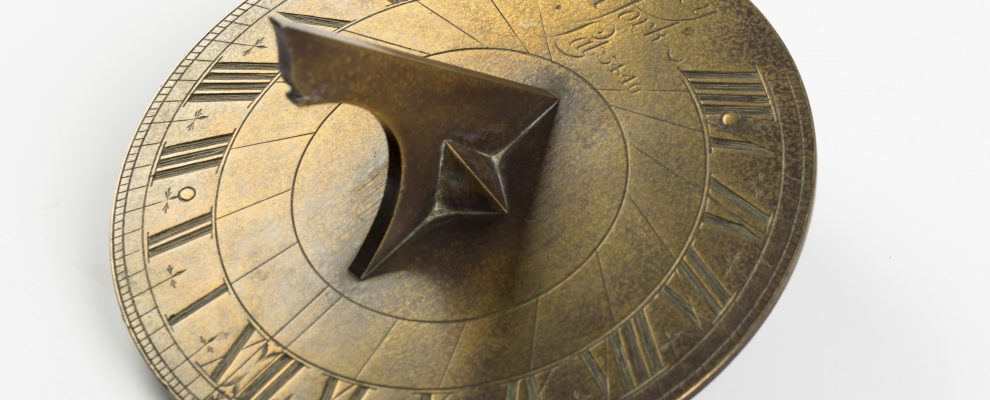The sundial is perhaps the most ancient form of artificial timepiece. It uses the position of the sun to indicate the time by casting a shadow on a graduated plate. When the sun reaches its highest point in the sky the time is taken to be ‘noon’, and a period of 24 hours is taken to elapse between one noon and another. However, variability in the rotation of the earth on its axis and in its movement around the sun mean that through the course of the year the time that the sun actually reaches the noon position varies according to a cyclic pattern. The result is that sundials do not show a precisely 24 hour interval from noon to noon.
This variability had been recognised by astronomers since ancient times, but the rise of mechanical timepieces in the early modern period and the increasing desire for accuracy and precision gave the phenomenon a new significance. Mechanical clocks, unlike sundials, depend upon an unchanging 24 hour length to the day, so that if ‘clock time’ was to be accurate some means of adjusting for the variations in ‘sun time’ had to be developed. Once the cycle of variations was summarised in tabular or diagrammatic form in the mid-seventeenth century by mathematicians and astronomers such as Christiaan Huygens and Jonathan Flamsteed, clockmakers were able to adjust their timepieces using a sundial so that they showed a reliable mean solar time – that is, a reading of the time based on the movements of the sun but with the variability averaged out.
The owner of a clock or watch who had an ‘equation of time’ table or graph could, by consulting a sundial and adding or subtracting the appropriate number of minutes according to the time of year, set the timepiece correctly so that it would show regular mean solar time. The equation of time thus symbolises and embodies the quest for increasing precision and regularity that, in the seventeenth and eighteenth centuries, motivated both clockmakers and their customers.
Setting one’s watch by the sundial was also a social ritual: it might be done while taking a walk in the garden with guests. That the quest for precision and regulation had a social and cultural dimension, and could even provide the basis for barbed and satirical comment, is suggested by this observation in a letter of 1767 to Lord Fauconberg from his son Henry, Lord Belasyse:
Your Removal of the Sun Dial will answer well to the Ladies, who when they take their Morning walk will have but little trouble to regulate their watches. I wish for the sake of many fine Ladies in this Gaudy Metropolis, some well disposed Person would discover some means of regulating their Hours & actions, perhaps some Husbands I know, would vote a premium.
(From Keeping Time a temporary exhibition at Fairfax House, 5th October-31st December 2012)

Name: Hannah Phillip
Title: Director
Source: Keeping Time (Fairfax House, 2012)
